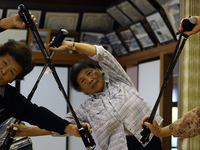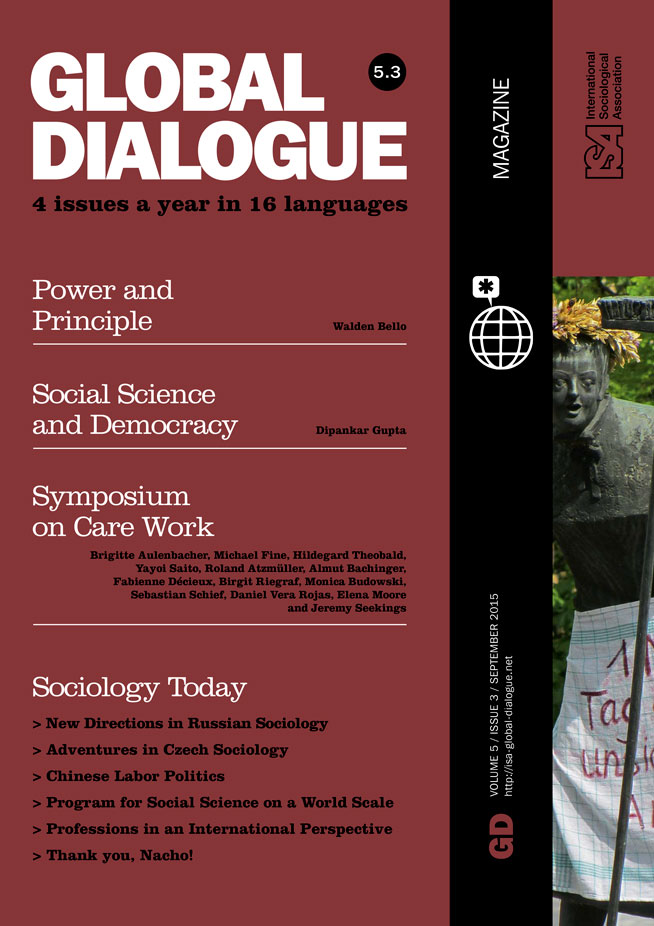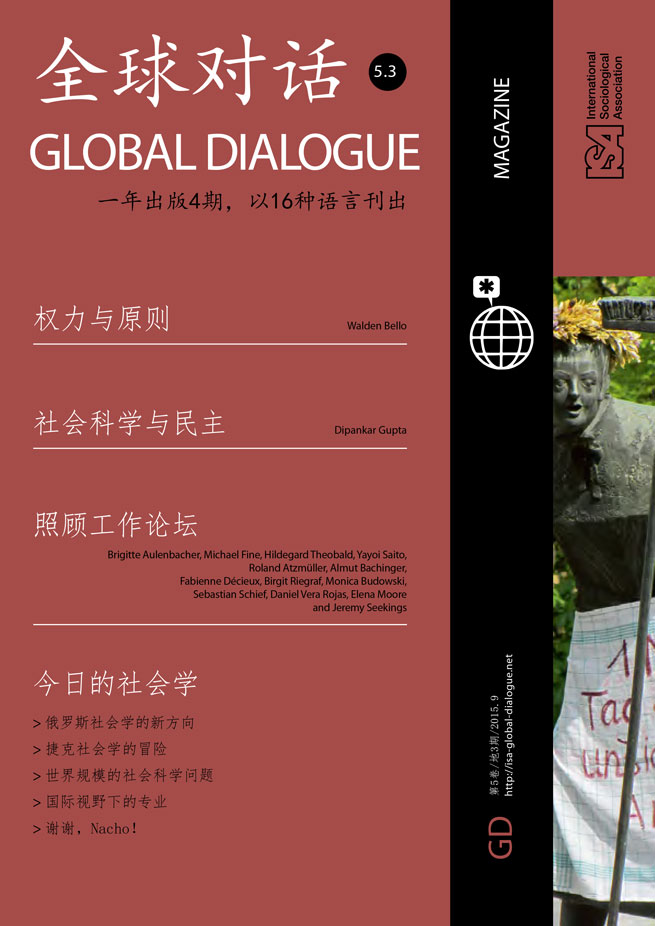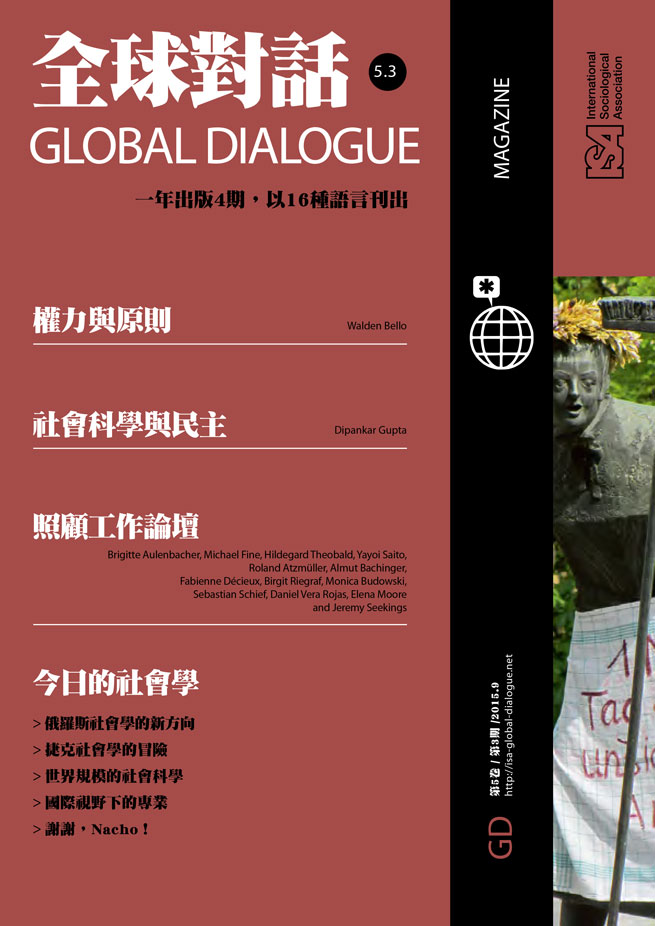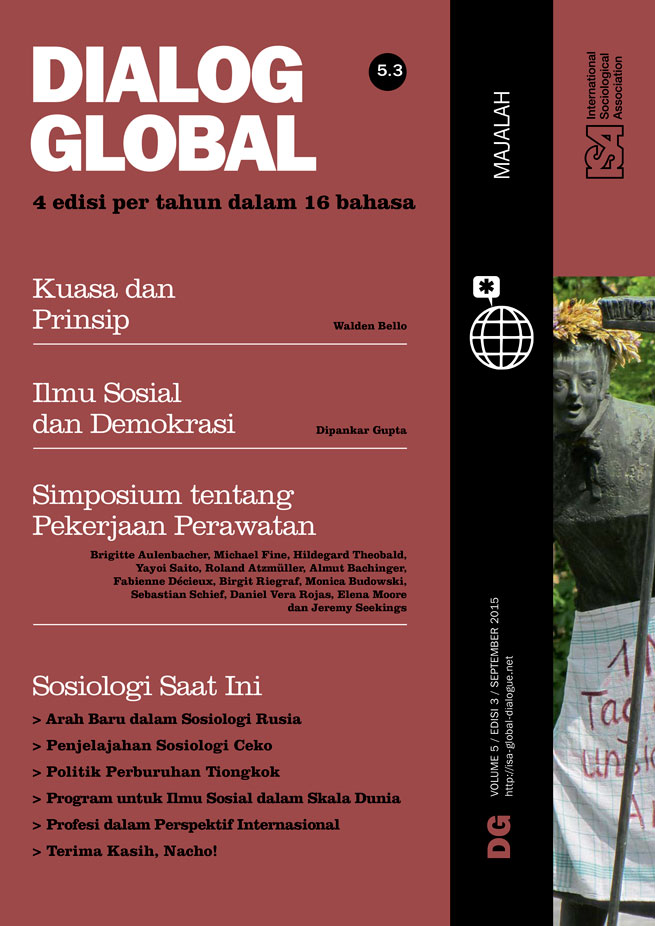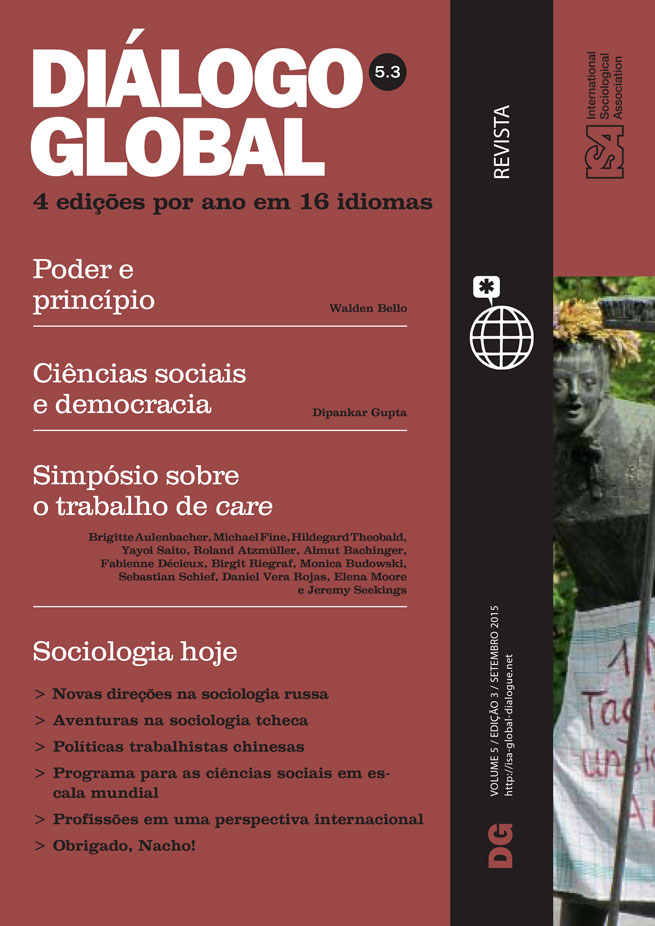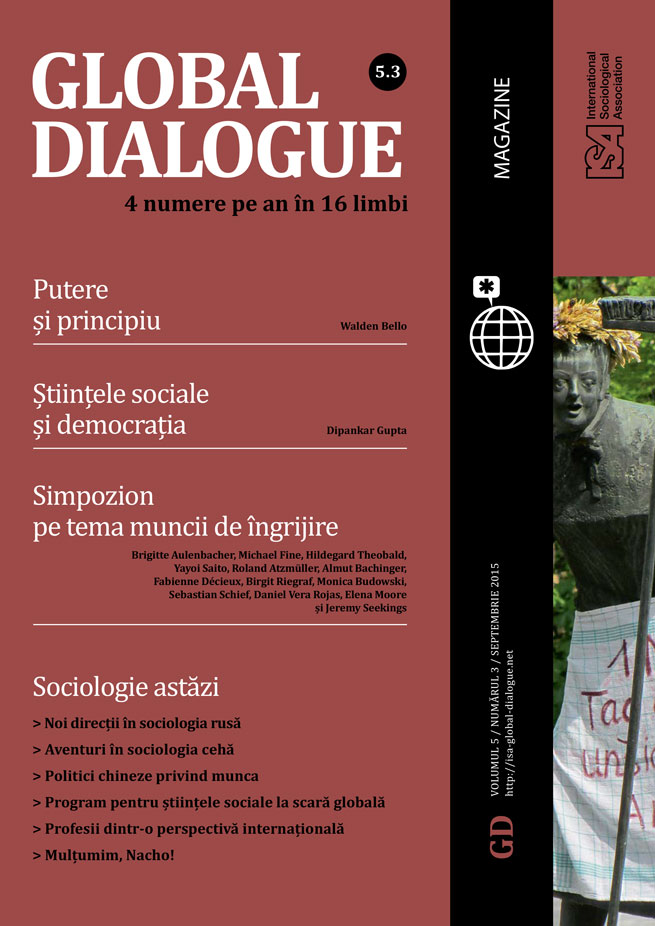Walzing Matilda is a deceptively cheerful song about a homeless swaggie who carries his bedding around (walzes his matilda) as he searches for work across the Australian outback. Internationally recognizable as Australian, it typifies the itinerant lifestyle that serviced the industrial scale sheep farming that dominated this country’s economy in the late nineteenth century. Another of Australia’s greatest folk songs from the same period, Past Carin’, could become the theme for the new era, as restructured and marketized care provisions increasingly shape the support provided to those who need personal assistance on a daily basis. In the words of the Henry Lawson poem on which the song is based:
Past wearyin’ or carin’,
Past feelin’ and despairin’;
And now I only wish to be
Beyond all signs of carin’.
Successive Australian governments, both Labor and Liberal-National, have sought public support by claiming to expand and develop programs of social care. But in this era of neoliberalism and fiscal austerity, they have drawn from a new template for growth in which public and non-profit services are constrained, while the market for services is promoted. Service users are recast as “consumers,” required to pay from their own pockets wherever possible.
Care: Developing a Sociological Diagnosis
We know that care is essential across the human life course. Yet an understanding of care remains a disciplinary blind spot. From even the most basic international or cross-cultural comparison, it is clear that the way that care is organized reflects the inner workings of society. Analyzing care thus provides a powerful social diagnostic tool, a way to understand the social relationships of the most vulnerable, as well as social structures and systems of power.
Although women have commonly been expected to provide care, unpaid, within the family, the importance of care beyond the family has grown massively over the 20th century. As the employment of women outside the home has increased, so has the demand for care outside the family. Governments in Australia, as elsewhere, have been forced to respond by providing access to formal, paid care.
Despite challenging economic conditions, Australia has significantly expanded formal care provisions, a shift which has been accompanied by significant changes in the organization, funding, and provision of care. These changes cover a number of relatively specialized fields, from the management of infancy and child care, through disability support, to aged care. Although each sector of care has specific features, these specificities should not obscure the larger transformation, or the common elements which underlie both demands for action and the response by government and market.
Reforms in Aged and Disability Care
Changes in care for Australia’s aged have been shaped by efforts to respond to the needs of an aging population while containing public costs. The changes build on some 50 years of expansion and reform in aged care, but are also intended to fundamentally transform key elements of the system, with higher fees for all types and levels of service. There is increasing reliance on market principles and encouragement for private for-profit providers to take an even greater role in the provision of services.
Unlike the earlier program, the new Home Support Program is fully national, with little variation across Australia’s states. Australia’s disability care reforms, too, introduce a national program, responding to increasing numbers of people with disabilities needing care, as well as to humanitarian concerns about the rather uneven and inadequate services previously provided by some state jurisdictions.
As in the reformed program of aged care, individualized payments – known as the Consumer-Directed Care approach – give service recipients control of their own funds to purchase services, a reform that is especially attractive to people with disabilities, and to parent carers of adult children with intellectual disabilities who still remain dependent on family care – typically their mother, or frail aged parents.
In both programs, replacing services with cash payments is intended to develop a service market and promote for-profit provision. It will also entrench casual employment, with considerable impact on the work conditions of employees and on public and non-profit services.
Taking Care of Children
Australia was arguably the first English-speaking country to develop a national program of child care services in the 1970s and 1980s. Service providers were initially all non-profit, but for-profit providers were introduced in the 1990s. The funding system, a limited form of means-tested subsidy and regulation, failed to expand to keep up with rising fees, and many families have been unable to obtain child care. Reforms introduced by the current Liberal-led government will redistribute existing funds and increase provision, but will also tie subsidies tightly to maternal employment.
Each of the programs described above replaces family-based care with paid formal services. An alternative approach, used in every OECD country but the USA, would allow for publicly-funded paid parental leave. A national program was finally introduced in Australia in 2011, but was pared down after only a few years, with the introduction of new conditions restricting eligibility and excluding employees who have access to work-related benefits.
Challenges for the New Care Template
Early welfare programs responded to families’ limited capacity to meet increasing needs for care, and the failure of markets to respond. Today, politicians seek to create an alternative system, based on a regulated, state-promoted market for care. The different regulated markets emerging in Australia promise to reduce government’s direct costs by replacing public funding with means-tested payments by families, and by “efficiencies” resulting from low-cost provision by for-profit providers. But while this approach holds some attraction by offering recipients increased “choice,” it also poses significant problems of security, both for recipients of care and for service staff, many of whom face reduced working conditions and loss of career prospects.
For sociologists, the challenge is also considerable. To go beyond theory, we must also understand the workings of these new care systems, while documenting and analyzing the consequences for care-giving, for payment, for loyalty and motivation of these different modes, for personal and family-based intimacy, on the one hand, and for paid employment on the other.
Michael D. Fine, Macquarie University, Sydney, Australia and member of ISA Research Committee on Sociology of Aging (RC11) <michael.fine@mq.edu.au>


